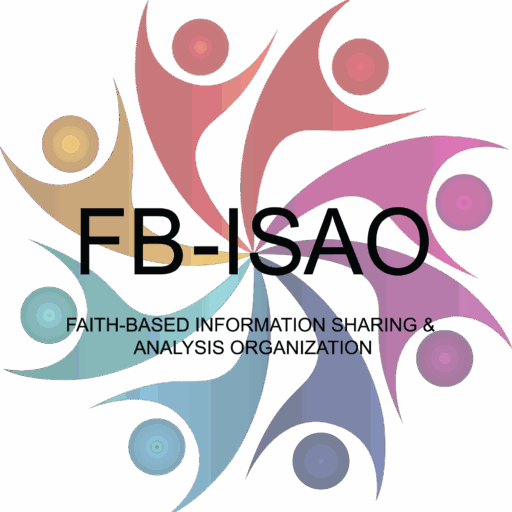This post will be updated frequently based on new guidance.
16 March, 2020
The following items were added:
Under Practice Good Disinfection Discipline
- (change 01, 16 March update) Use regular cleaning and disinfection products (see the EPA’s 15 Mar guidance)
Under Mass Gatherings/Assemblies. Consider limiting the size of assemblies.
- (change 02, 16 March update) On 15 March, the CDC shared new guidance, “Get Your Mass Gatherings or Large Community Events Ready,” stating, “CDC, in accordance with its guidance for large events and mass gatherings, recommends that for the next 8 weeks, organizers (whether groups or individuals) cancel or postpone in-person events that consist of 50 people or more throughout the United States,” noting, “This recommendation does not apply to the day to day operation of organizations such as schools, institutes of higher learning, or businesses.” (see the complete announcement for more details)
- (change 03, 16 March update) On 16 Mar, President Trump articulated new guidelines – recommendations and not mandates – calling on Americans to avoid social gatherings involving groups of more than 10 for the next 15 days. They also suggest that school-age students learn from home when possible. See the President’s Coronavirus Guidelines for America.
FB-ISAO‘s Business Resilience Group (BRG) is maintaining close monitoring on COVID-19. Based on the current situation, the BRG has determined to increase the Physical Threat Level from “GUARDED,” to “SEVERE,” as of 13 March 2020. The BRG will continue to assess the Physical Threat Level and provide updates accordingly. At present, this increase is valid through sunset on 31 March 2020, but that will be periodically re-evaluated. Please refer to this post for an explainer on the FB-ISAO Threat Levels.

FB-ISAO’s definitions of the Physical Threat Levels, “SEVERE” means
FB-ISAO assesses that an event is highly likely.
Technically, the threat from coronavirus (COVID-19) is more aligned with our highest level of threat, which is “CRITICAL.” CRITICAL means that an attack, or event is under way or expected imminently. While this is the case with COVID-19, the event being the ongoing pandemic, based on our assessment of the lethality of the threat in the United States at this time, and given proactive mitigating actions, we assess that “SEVERE” is a more reasonable – while still an urgent – level.
“What does this mean to me?” Given the very diverse nature of the populations at faith-based organizations – from places of worship to charities to schools and others, we are not recommending specific actions but rather, are encouraging FBOs to assess the evolving threat to their places and people and consider appropriate actions to mitigate risk. Among those considerations and possible actions:
- Constantly assess the threat, operations, and mitigation activities.
- We encourage members to review the FB-ISAO Daily Journal for general threat awareness, updates and ideas on what other organizations are doing.
- Join the #covid-19 channel in FB-ISAO Slack to see more updates, details and conversation on this threat, and share your questions, ideas and actions for others.
- Implement enhanced hygiene procedures and implement reasonable social distancing. Refer to recent OSHA’s “Guidance on Preparing Workplaces for COVID-19.” New York City released updated guidance on 12 Mar which includes ideas for other ways to create personal space, including:
- Allow employees to telecommute if the job allows.
- Create staggered work hours. For example, instead of 9 a.m. to 5 p.m., consider changing some work hours to 10 a.m. to 6 p.m. or 8 a.m. to 4 p.m.
- Make work schedules flexible.
- Practice Good Disinfection Discipline. New York City has good guidance for non-healthcare settings here. Included in that:
- Staff should wear and use appropriate Personal Protective Equipment (PPE), such as gloves, according to existing policies and procedures, as well as following label directions for cleaning products.
- Have soap and paper towels in bathrooms at all times.
- Ensure that all handwashing sinks are in a state of good repair.
- Consider having alcohol-based hand sanitizers in common areas to encourage hand hygiene.
- Frequent hand washing, gloves and use of alcohol-based hand sanitizer by staff handling waste can support good personal hygiene practices.
- Pay special attention when cleaning to frequently touched surfaces in common areas and bathrooms. Frequently contacted items such as drinking fountains, faucet handles, door hardware, push plates and light switches are to be wiped down regularly with cleaners.
- (change 01, 16 March update) Use regular cleaning and disinfection products (see the EPA’s 15 Mar guidance)
- Mass Gatherings/Assemblies. The Virginia Department of Health (VDH) has stated, “The decision to cancel or modify an event such as a sports tournament, concert, festival, graduation ceremony or business conference is complex and there is not a ‘one-size-fits-all’ approach.” This applies to faith-based services, teachings and worship, as well as charitable events and private schooling.
- Encourage at-risk populations to avoid gatherings and to consider staying home for their safety.
- According to CDC and VDH guidance, populations especially vulnerable to developing serious illness from COVID-19 include:
- Older adults (>60 years; New York City includes anyone over 50), and/or
- People who have serious chronic medical conditions like
- Heart disease
- Diabetes
- Lung disease
- Weakened immune systems
- Consider limiting the size of assemblies. Some state and local jurisdictions are directing maximum sizes for mass gatherings. Follow local guidance where available and consider reasonable limits where there is no specific guidance. For planning considerations:
- (change 02, 16 March update) On 15 March, the CDC shared new guidance, “Get Your Mass Gatherings or Large Community Events Ready,” stating, “CDC, in accordance with its guidance for large events and mass gatherings, recommends that for the next 8 weeks, organizers (whether groups or individuals) cancel or postpone in-person events that consist of 50 people or more throughout the United States,” noting, “This recommendation does not apply to the day to day operation of organizations such as schools, institutes of higher learning, or businesses.” (see the complete announcement for more details)
- (change 03, 16 March update) On 16 Mar, President Trump articulated new guidelines – recommendations and not mandates – calling on Americans to avoid social gatherings involving groups of more than 10 for the next 15 days. They also suggest that school-age students learn from home when possible. See the President’s Coronavirus Guidelines for America.
- On 12 March, New York City has moved to restrict most gatherings to no more than 500 people.
- In California and Oregon, governors put a stop to all gatherings of more than 250 people.
- It may be advisable to cancel mass gatherings / assemblies involving older audiences, or audiences likely to have the concerning conditions mentioned above.
- Consider adding frequent hand-washing stations if possible and use signage to encourage good hygiene.
- Outdoor events may be more preferable to indoor assemblies. Indoor events where people must stay in closer proximity to each other are likely to foster the spread of COVID-19 more than outdoor events, where social distancing can be more easily conducted.
- Encourage event participants and attendees to refrain from attending the event if they are sick and/or experiencing symptoms consistent with COVID-19 infection regardless of their communities’ COVID-19 status.
- In addition, event planners should have a plan in place to respond to ill individuals. This plan should be communicated to participants with the goal of identifying illness early and quickly assisting ill participants to move to a more isolated area while medical support needs are assessed.
- Discourage individuals returning from overseas areas that have been affected from attending assemblies until they have been sufficiently cleared of concern.
This assessment has been developed by FB-ISAO and is our general, nationwide, threat assessment for the US community of faith. As always, for local threat information, members are encouraged to work closely with neighborhood partners, local law enforcement, state and local fusion centers, local FBI field offices, DHS Protective Security Advisors and other local experts and responders.


